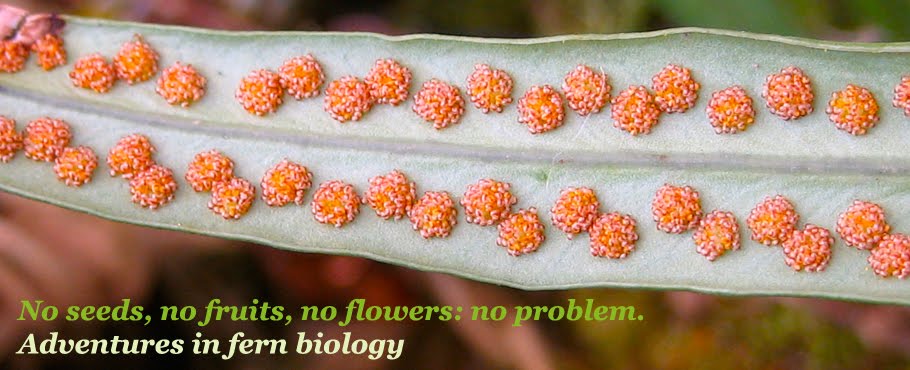Thursday, June 2, 2011
More flowers
Monday, May 16, 2011
A floral departure...
Wednesday, May 11, 2011
More fiddleheads!

Saturday, May 7, 2011
Lady fern fiddleheads

Sunday, May 1, 2011
Spring's first fiddleheads!
Sunday, March 20, 2011
Ferns and Charles R. Knight


Monday, December 20, 2010
Fern Rap
I’m a fern in the world, just trying to grow
Fertilization and cell division is all that I know
I just want to survive and spread my spores
And know I’m not a peach but my life is hard core
They say I’m a monilophyte but you can call me a fern
My life’s been a long one, with many twists and turns
Sometimes it’s hard to discern what stage I’m in
Let me welcome you to my world, let the story begin
I started out as a spore, on the bottom of a leaf
Grew up in a sporophyte, my release was a relief
I had many brothers and sisters, and some of them didn’t make it
But sometimes life is hard, and the goal is just to stay fit
I was a small little guy, all alone and homeless
But I soon started to grow I guess you could say mitosis
And pretty soon fertilization became my focus
But I knew finding a mate for me was pretty much hopeless
I’m a fern in the world, just trying to grow
Fertilization and cell division is all that I know
I just want to survive and spread my spores
And know I’m not a peach but my life is hard core
So I fertilized myself just not to remain childless
I really didn’t care that all my kids would be homozygous
It really wasn’t hard there was no pandemonium
I just put sperm from my antheridia into my archegonium
So now I was a zygote, yeah from 1N to two
The best years of my life, and upwards I grew
The increase in my size was all in my genetics
And it also didn’t hurt that I was photosynthetic
I grew and I grew and it seemed like overnight
I reached my final stage and became a sporophyte
So now I’m making sporangium all on my own
And just hoping my little spores, will all find a home









































